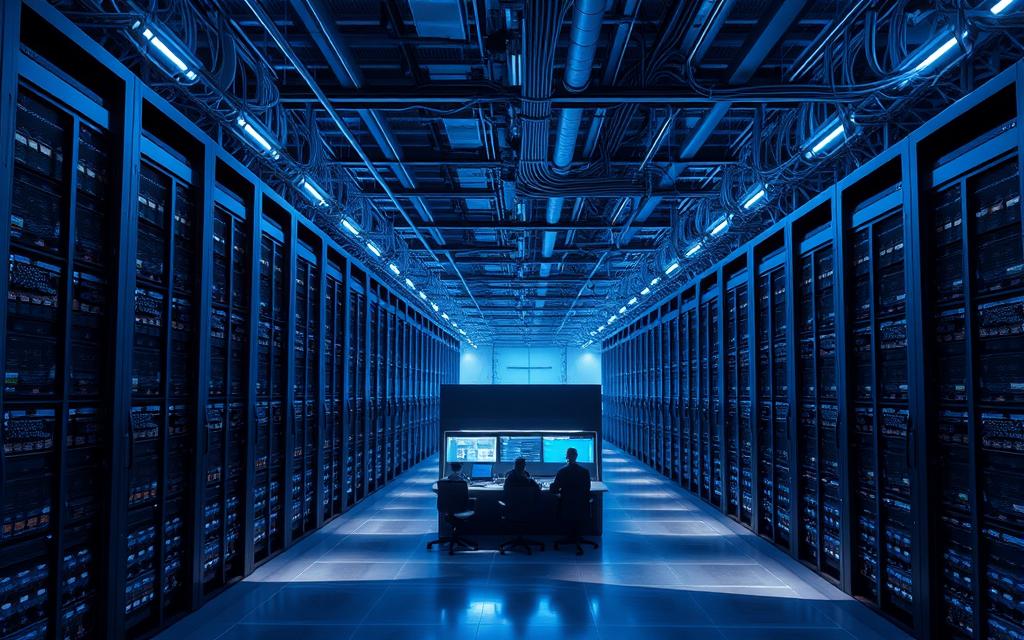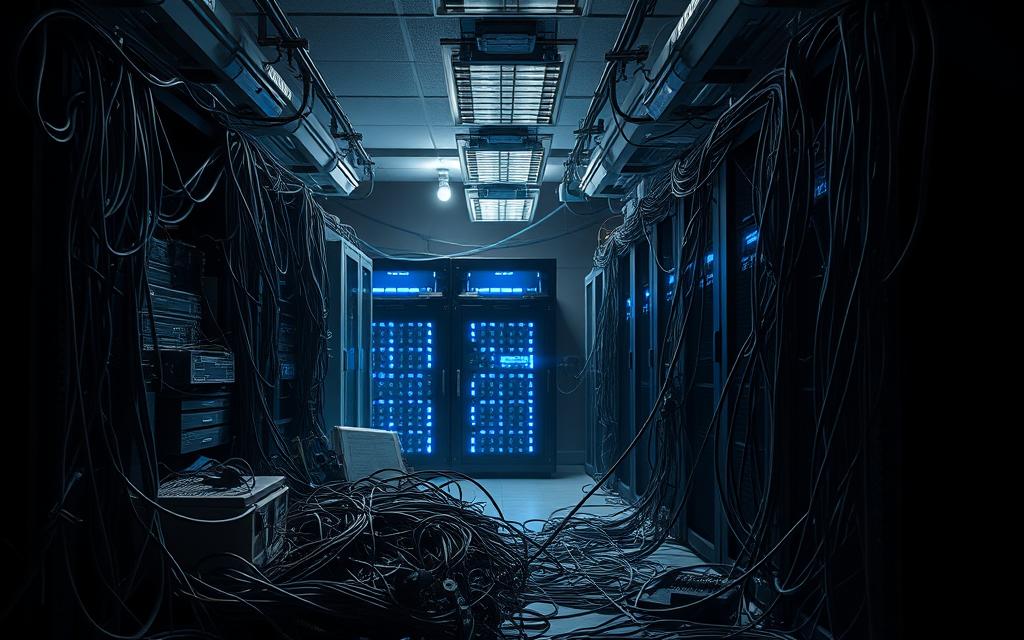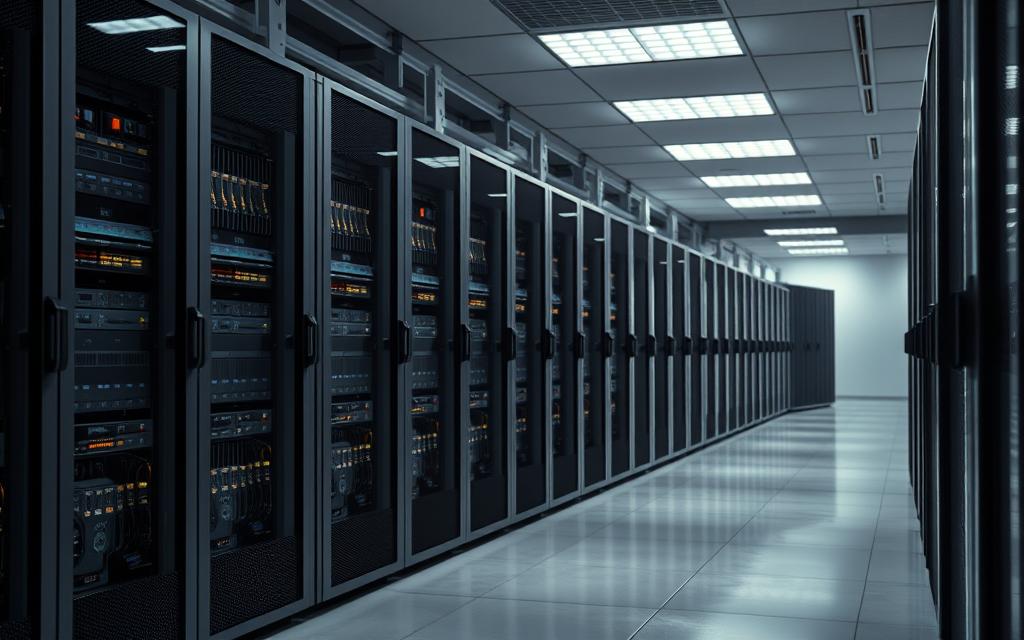Table of Contents
Modern businesses rely on efficient ways to manage data and resources. One powerful solution is server-based computing, where processing and storage happen on centralized systems instead of individual devices. This approach streamlines operations while enhancing security and scalability.
Industries like healthcare, education, and enterprise IT benefit greatly from this model. Thin clients, for example, reduce hardware expenses without sacrificing performance. Users gain seamless access to applications and files from anywhere.
This article explores how server-based computing works, its advantages, and real-world applications. Learn why organizations increasingly adopt this method for better efficiency and cost savings.
What Is Server-Based Computing?
Processing power shifts from local devices to remote hubs in this model. Servers handle heavy workloads, while clients—like thin terminals—focus on input and output. This separation slashes hardware costs and simplifies maintenance.
Modern implementations trace back to mainframe systems but now leverage Virtual Desktop Infrastructure (VDI). Unlike outdated setups, today’s solutions offer flexibility. Employees access the same applications from any location securely.
Security thrives under centralized management. Encryption protects data in transit, while role-based controls limit access. Compare it to streaming music: files stay secure in the cloud, but playback happens instantly on demand.
Key advantages include:
- Lower total cost of ownership (TCO) by reducing local hardware needs
- Standardized updates rolled out network-wide in minutes
- Reliable disaster recovery with backups stored offsite
Over 97% of enterprises rely on this approach for critical operations. It balances performance, security, and scalability without demanding powerful end-user devices.
Key Components of Server-Based Computing
Efficient data handling relies on interconnected components working in harmony. Each element plays a critical role in delivering performance, security, and scalability. Below, we break down the four pillars of this system.
Servers
Powerful hardware forms the backbone of operations. These machines process requests, store data, and run applications for multiple users simultaneously. Enterprises often use blade servers or hyper-converged infrastructure for density and efficiency.
Clients/Terminals
Thin clients or repurposed devices serve as entry points. They rely on remote processing, reducing local hardware demands. For example, a hospital might deploy zero-client terminals to streamline access to patient records.
Network Infrastructure
High-speed connections ensure smooth communication between components. Fiber-optic cables and low-latency switches prevent bottlenecks. A well-designed network supports real-time collaboration across locations.
Software and Applications
Optimized software stacks, like Citrix Virtual Apps, enable centralized management. Tools such as VMware ThinApp layer applications for easier updates. Over 400,000 organizations trust these solutions for reliability.
| Component | Role | Example Solutions |
|---|---|---|
| Servers | Central processing/storage | Dell PowerEdge, HPE Synergy |
| Clients | User interface | Dell Wyse, IGEL OS |
| Network | Data transfer | Cisco Nexus, Juniper switches |
| Software | Application delivery | Citrix, VMware Horizon |
Updates roll out via *golden images*, modifying thousands of endpoints at once. FSLogix containers further optimize software like Office 365. This cohesive approach minimizes downtime while maximizing productivity.
How Server-Based Computing Works
Behind every smooth virtual session lies a carefully orchestrated process. Clients connect to servers through secure authentication, initiating a chain of optimized operations. This model ensures resources scale dynamically, meeting demand without overloading local devices.

- Authentication: Users verify credentials via protocols like Active Directory.
- Session Brokering: Requests route to the least busy server for balance.
- Virtualization: Applications run in isolated containers, preventing conflicts.
Advanced compression slashes network bandwidth by 75%. For example, hospitals share EHRs across campuses instantly. Latency stays under 30ms—critical for CAD designers leveraging GPU passthrough for 3D rendering.
“Persistent desktops retain user customizations, while non-persistent ones reset post-session—ideal for task workers.”
Deployment flexibility lets IT teams match solutions to needs. Financial firms often choose persistent setups for traders, while call centers opt for non-persistent pools. Centralized data processing means updates apply universally, eliminating version mismatches.
Server-Based Computing vs. Other Models
Organizations must weigh trade-offs between centralized and distributed systems. Each model offers distinct advantages for access, cost, and control. Below, we compare server-based computing with client-based and cloud alternatives.
Client-Based Computing
Local devices handle processing in client-based setups. This demands powerful hardware but reduces reliance on network stability. However, updates and security patches become fragmented across resources and are harder to manage.
Industries with strict data residency rules may prefer server-based models. Centralized control ensures compliance, unlike decentralized client systems.
Cloud Computing
Cloud services like AWS EC2 offer pay-as-you-go scalability. Yet, costs can spike during peak demand—on-prem hyperconverged infrastructure often proves cheaper long-term. For example, cloud vs. on-prem costs vary by workload intensity.
- Performance: Local SSDs outperform cloud block storage for I/O-heavy tasks like databases.
- Hybrid Trends: 42% of enterprises repatriate workloads from cloud to on-prem for cost or latency reasons (Source 1).
- Bursting: SBC can integrate with cloud during traffic surges, blending both models.
“Hybrid architectures let businesses balance control and flexibility, avoiding vendor lock-in.”
Benefits of Server-Based Computing
Data-driven enterprises prioritize efficiency, security, and growth. By shifting workloads to centralized systems, businesses unlock measurable advantages. Below, we explore how this model drives cost savings, control, and adaptability.

Cost Efficiency
Thin clients slash hardware expenses by up to 60%. Centralized resources reduce the need for high-end devices. For example, schools deploy Chromebooks to access virtual labs without costly upgrades.
- Lower energy consumption with shared server workloads
- Predictable licensing fees replace per-device software costs
- Extended device lifespans through reduced local processing
Centralized Management
IT teams deploy updates network-wide in minutes. Role-based policies standardize access, minimizing configuration errors. A single dashboard controls thousands of endpoints.
| Task | Traditional Model | Server-Based Approach |
|---|---|---|
| Software Updates | Manual per device | Push to all users instantly |
| Security Patches | Delayed rollout | Network-wide in |
| Backups | Local storage risks | Automated server snapshots |
Enhanced Security
Encrypted network connections protect sensitive data. Multi-factor authentication adds layers against breaches. Financial firms use this to comply with FINRA audits seamlessly.
“Centralized logging detects anomalies faster than scattered client systems.”
Scalability
Nutanix clusters support linear growth to 50,000 users. Auto-scaling adjusts infrastructure during peak trading hours. Teams expand without hardware bottlenecks.
- Horizontal scaling: Add servers to distribute loads
- Cloud bursting: Hybrid models handle traffic spikes
- Load testing: Simulate 10x demand before deployment
Common Uses of Server-Based Computing
Industries worldwide leverage centralized processing for critical operations. This model optimizes workflows while ensuring secure access to resources. Below, we explore its top applications across sectors.

Business and Enterprise Applications
Corporations rely on centralized systems to streamline tasks. Virtual Desktop Infrastructure (VDI) lets users work remotely without compromising performance. For example, MEDITECH Expanse uses VDI to deliver EHRs to 10,000+ clinicians.
- Call centers deploy non-persistent desktops for uniform agent experiences.
- Financial firms encrypt sessions to meet FINRA audits.
- Manufacturing plants monitor IoT devices via thin clients.
Healthcare and Education
Hospitals use DICOM image streaming for real-time diagnostics. Schools adopt 1:1 device programs with multi-session OS for computers labs. Centralized systems also simplify FERPA compliance for student information.
| Use Case | Business/Enterprise | Healthcare/Education |
|---|---|---|
| Key Benefit | Cost-efficient scaling | Secure data sharing |
| Example | MEDITECH VDI | 1:1 student devices |
| Tools | Citrix Virtual Apps | DICOM viewers |
“Centralized systems reduce device costs by 40% in education while maintaining performance.”
Challenges and Limitations
Adopting centralized systems presents unique challenges that require strategic planning. Financial institutions often face 5-nines SLA requirements (99.999% uptime), demanding robust devices and infrastructure. These hurdles fall into two primary categories.

Initial Setup Costs
High-performance servers and virtualization software require significant upfront investment. Financial sector deployments average $250K-$500K for 500-user setups. Key cost drivers include:
- Hyperconverged infrastructure hardware
- VDI licensing per concurrent user
- IT training for new management tools
| Component | Cost Range | ROI Period |
|---|---|---|
| Server Hardware | $80K-$150K | 18-24 months |
| Network Upgrades | $25K-$60K | 12 months |
| Software Licenses | $120/user/year | Ongoing |
Network Dependency
Continuous connection quality directly impacts user experience. Latency above 150ms disrupts real-time applications like trading platforms. SD-WAN solutions help maintain uptime:
“Modern SD-WAN achieves failover under 200ms during outages—critical for financial transactions.”
Last-mile solutions like LTE backups provide redundancy when primary network links fail. IT teams should collaborate with telecom providers to ensure adequate power and bandwidth for remote locations.
For clients in unstable regions, offline modes cache essential files locally. These workarounds maintain partial functionality until connections restore.
Conclusion
Centralized processing transforms how businesses handle data and operations. This approach boosts efficiency while cutting costs through streamlined management.
Migrating requires careful planning. Start with pilot programs to test performance and user adoption. Measure latency, scalability, and security needs before full deployment.
Future advancements will likely integrate AI for smarter resource allocation. Predictive analytics could optimize workloads dynamically.
For teams exploring this model, download our readiness checklist. It covers hardware requirements, network assessments, and staff training essentials.
Embrace the shift toward centralized systems—your organization’s agility depends on it.
FAQ
How does server-based computing differ from traditional setups?
Unlike traditional setups where processing happens on individual devices, this model centralizes tasks on powerful hardware. Users connect via thin clients or terminals, reducing local hardware demands.
What hardware is essential for implementation?
Robust servers handle data processing, while lightweight clients access resources. High-speed networks like LANs or WANs ensure seamless connectivity between components.
Why do organizations prefer this approach?
Centralized management slashes IT costs by up to 40% while improving security. Updates and patches deploy instantly across all connected devices.
Can it integrate with cloud services?
Absolutely. Hybrid models combine on-premises infrastructure with cloud platforms like AWS or Azure for flexible resource scaling.
What industries benefit most from this technology?
Healthcare systems like Epic and education platforms such as Blackboard leverage centralized computing for secure, scalable access to critical applications.
Does network reliability impact performance?
Yes. Since all processing occurs remotely, stable connections are vital. Redundant network infrastructure prevents downtime in mission-critical environments.
How does security compare to traditional PCs?
Data never leaves secure data centers, reducing breach risks. Financial institutions like Chase and Bank of America use this model for its superior protection.
What about software licensing costs?
Centralized deployment often reduces licensing expenses. Instead of buying individual copies, companies purchase concurrent user licenses for shared access.









